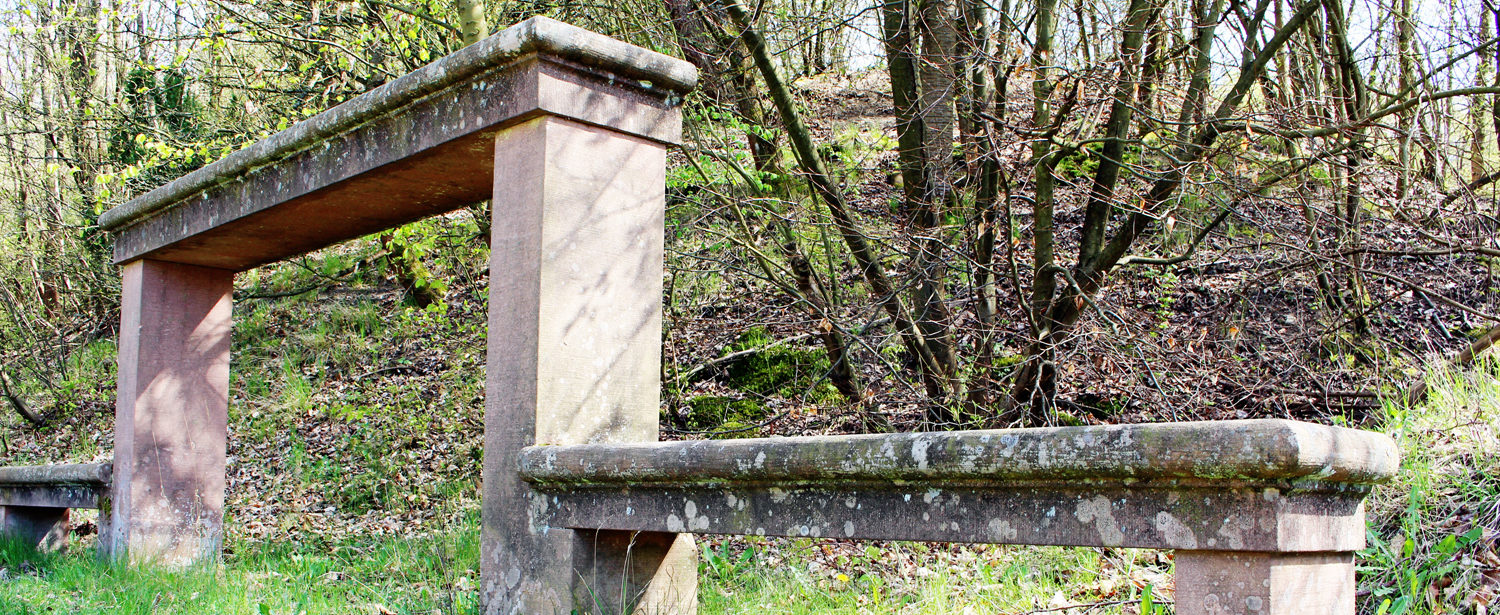“Rest” Ruhe

Replica: 1997
Benches of this type, known as Ruh or Ruhe (Rest) in Hesse, were placed along major thoroughfares and road forks of larger towns, for example along the Saalburg Roman Road north-west of Bad Homburg vor der Höhe, or at the foot of Münzenberg Castle in Wetterau county. Rests were most frequently made from sandstone or basalt and with bars at one or two heights. The unspectacular stone benches are easy to overlook at first sight, but they are evidence of former transport methods and old trade routes.
Rests served porters as points where they could take a break, taking their heavy baskets off their backs and having a rest for a moment. The goods produced by craftsmen or harvested by farmers had to be carried far, on foot, on roads which were often uneven. Mules were affordable only for the very wealthy. Apart from woven baskets with handles, panniers were in common use. These were large baskets fixed to the porter’s back with straps. The local basket weaver would make baskets of any type. The preferred material was willow switches. Large panniers could be set onto the lower slabs of the rest and easily lifted again later. The higher slabs were intended for loads carried on the heads and shoulders.
For example, woman market traders from the Usingen region carried their produce in baskets on their heads and in their arms for sale at the markets in the towns along the southern Taunus mountains. The stone benches also afforded the welcome opportunity to have a chat and exchange news with other porters and traders.
The Ruhe in the Open Air Museum is a copy of the original bench at the Saalburg. In contrast to the simple design of comparable stone benches, this rest’s sandstone slabs are dressed.

Mit dem Laden der Karte akzeptieren Sie die Datenschutzerklärung von Google.
Mehr erfahren




